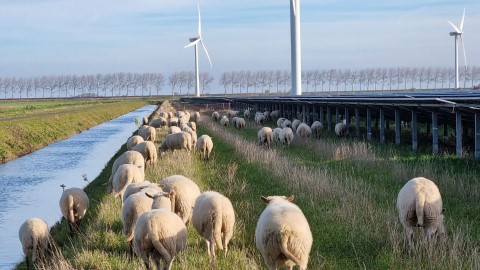Far beyond the power sector, people across the world are looking for ways to reduce the human impact on climate change. Utilities are driven to produce power more sustainably, as well as investing into new markets and technologies to support growth through innovation.
For utilities, the energy transition has been underway for a long time, as they continuously evolve away from purely coal-based power, and recently there has been mounting pressure to decarbonise both production and the supply chain.
In light of this, utilities need a trusted source of data, insight and guidance that helps them navigate the unfamiliar and mitigate risk.
Our recent ebook, ‘Supporting utilities’ growth: how Wood Mackenzie is helping some of the world’s leading utility companies overcome their greatest challenges and thrive in an ever-changing environment’, explores the key challenges facing utilities companies today and breaks down what they need to understand to overcome these obstacles.
Fill out the form at the top of the page to download your free copy of the ebook, and read on to explore just a couple of the challenges facing utilities today.
Expanding into new regions
Expanding into new regions is a strategic imperative for utilities seeking sustainable growth. This expansion is often driven by the allure of renewable energy resources like wind and solar, which promise not only a greener future but also economic viability.
One of the biggest challenges around international expansion is understanding the pricing dynamics of renewable energies in different markets. Renewable energy pricing is influenced by a complex interplay of factors, including local demand, government incentives and the maturity of renewable technologies. To make informed investment decisions, utilities must analyse and anticipate the pricing fluctuations unique to each market they enter.
Another critical aspect is comprehending production congestion and planning. Renewable energy projects can face congestion issues due to various factors, such as limited transmission capacity or grid integration challenges. Utilities must develop strategies to address these bottlenecks to ensure efficient energy production and distribution.
Moving into new markets also creates a complex web of policies and regulations, which can vary significantly from those in familiar territories. These new regulatory landscapes mean utilities need to engage with local authorities, understand compliance requirements and adapt their business strategies accordingly. In essence, utilities need to be both agile and well-informed to thrive in diverse market environments.
Successfully expanding into new regions requires utilities to leverage data-driven insights, anticipate market trends, and forge partnerships with local stakeholders. It’s a holistic approach that encompasses not only the technical aspects of energy production but also the socio-economic and regulatory dimensions of each new market.
Embracing decarbonisation and sustainability
In today’s world, decarbonisation and sustainability are not just buzzwords; they are imperatives that utilities must wholeheartedly embrace. As public pressure intensifies to reduce emissions while meeting the ever-increasing demand for energy, utilities are faced with the dual challenge of producing more power and producing it more sustainably.
Around 90% of utilities’ emissions stem from their supply chains. This realisation underscores the importance of knowing the emissions associated with suppliers’ activities. To combat this, utilities need to collaborate closely with their suppliers to track and reduce the carbon footprint across the entire value chain. This might involve promoting cleaner production processes or sourcing materials from low-emission suppliers.
Developers and utilities require transparency at the asset and corporate level and across the value chain, to enable comprehensive assessment of emissions-related risks and opportunities. This transparency is not just about emissions data; it’s about understanding the broader sustainability practices and risks within the organisation, including aspects such as resource efficiency, waste reduction and overall corporate sustainability strategies.
And it’s not enough for utilities to reduce their own emissions. They must actively contribute to the creation of green energy. Ambitious targets for renewable energy production are central to this effort. Utilities are investing in a diverse array of renewable projects, from wind farms and solar installations to cutting-edge technologies like offshore wind and advanced energy storage systems. These initiatives are not only reducing emissions but also diversifying the energy mix and enhancing grid resilience.
How can utilities address these challenges?
Addressing these multifaceted challenges requires a combination of strategies, including:
- Data-driven decision making: Utilities must harness the power of data analytics and market insights to make informed choices regarding expansion, decarbonization, and sustainability initiatives.
- Collaborative partnerships: Building partnerships with experts in the energy sector can provide utilities with the knowledge and tools needed to navigate complex regulatory landscapes and achieve their sustainability goals.
- Investment in innovation: Utilities should allocate resources to research and development, exploring cutting-edge technologies and innovative solutions that drive efficiency, reduce emissions, and improve grid resilience.
To delve deeper into these challenges and explore the solutions, fill out the form at the top of the page to download your free copy of ‘Supporting utilities’ growth: how Wood Mackenzie is helping some of the world’s leading utility companies overcome their greatest challenges and thrive in an ever-changing environment’.


